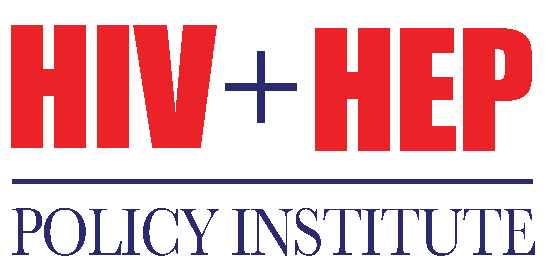Now that copay assistance must count, government must stop scheme of classifying drugs as “non-essential health benefits”
Press Release

HIV+Hep Releases Largest Public List of Employers Skirting ACA
Washington DC…In comments submitted on the 2025 Notice of Benefits and Payment Parameters proposed rule that will govern how private health plans must operate, the HIV+Hepatitis Policy Institute urged the Biden administration to accept and enforce the D.C. District Court decision that struck down the rule allowing insurers not to count copay assistance for prescription drugs as part of patient cost-sharing, particularly now that the Court has clarified what rule is in effect.
Additionally, HIV+Hep is providing to CMS the most comprehensive public list of employers and issuers that are using vendors that classify a set of covered prescription drugs as “non-essential health benefits” (non-EHB) and force their employees enrolled in their insurance plan to obtain drugs outside of the ACA cost-sharing protections. These vendors then collect copay assistance in excess of the annual out-of-pocket maximum.
Based on our research, the list of over 100 employers includes such large private companies as Bank of America, Chevron, Citi, Delta, Hertz, Hilton, Home Depot, NewsCorp, Ruby Tuesday, Target and United Airlines; the states of Connecticut, Delaware, Kansas, Kentucky, and New Mexico; universities including Baylor, Carnegie Mellon, Duke, George Washington, Harvard, Kent State, New York University, Ohio State, Purdue, University of California, Yale, and Yeshiva; unions including New York Teamsters, Screen Actors Guild, and Writers Guild; and non-profits including the Catholic Diocese of Columbus and the Cleveland Clinic.
HIV+Hep research also found at least 22 insurers that use this tactic, including Blue Cross Blue Shield plans in Massachusetts and Western New York, Johns Hopkins, Medical Mutual of Ohio, and Premera and WellMark Blue Cross.
In the proposed rule, CMS is clarifying its existing policy that prescription drugs covered in excess of a state benchmark plan are considered essential health benefits, and subject to EHB protections, including annual cost-sharing limits. CMS indicated they believe this practice was not widespread but sought information on how often it is being used.
“We hope this information on the widespread use of these schemes will propel the federal government to finalize the rule and take immediate action to stop this apparent abuse in the entire private insurance market,” said Carl Schmid, executive director of the HIV+Hepatitis Policy Institute. “Forcing beneficiaries to access their medications without cost-sharing protections allows vendors to exploit copay assistance from drug manufacturers in excessive amounts.”
While it is clear in the proposed rule that this loophole is closed for the small group and individual markets, we are urging the federal government to clarify that it would apply to all private insurance markets to ensure the ACA works for everyone.
In its comments to CMS, HIV+Hep used public documents from these vendors, including SaveOnSP and PrudentRx, which describe how they are operating. The pharmacy benefit manager Express Scripts is very up front on how they are working with SaveOnSP “on the first non-essential health benefits copay assistance solution.” SaveOnSP’s list of drugs numbers 392, while PrudentRx says it designates as non-EHB over 500 drugs impacting over 50 groups of health conditions.
In our comment letter we also describe how other vendors such as Payer Matrix and SHARx designate “non-EHB” drugs and then force insured patients to obtain their drugs using alternative funding programs including manufacturer patient assistance programs, which are intended for uninsured people, or even by importing drugs.
On the issue of copay assistance, HIV+Hep called on CMS to enforce the requirement that copay assistance must count except for brand name drugs with generic equivalents, drop their appeal of the lower court’s ruling, and, if a new rule is issued, require copay assistance to count.
In the comments, HIV+Hep laid out why copay assistance, which according to IQVIA totaled $19 billion in 2022, is so important for beneficiaries to afford their drugs. Insurers utilize high deductibles and co-insurance, which can be as much as 50 percent of the list price of the drug.
HIV+Hep cited CMS national health care expenditure data that shows that patients are responsible for paying 14 percent in out-of-pocket costs for prescription drugs, whereas for hospital spending it is only 2.6 percent.
Last week, HIV+Hep submitted comments on the 2025 Draft Letter to Issuers in the Federal-facilitated Exchange, which can be found here. In those comments, we focus on adverse tiering in drug formularies, particularly HIV and hepatitis C drugs, and the lack of enforcement by CCIIO and state regulators in ensuring issuers are in compliance with ACA nondiscrimination and other patient protections.
To read the full comment letter click here.
For the list of employers and insurers using vendors that designate “non-EHB” drugs click here.
# # #
The HIV+Hepatitis Policy Institute is a national, non-profit organization whose mission is to promote quality and affordable healthcare for people living with or at risk of HIV, hepatitis, and other serious and chronic health conditions.
jburke@hivhep.org
(301) 801-9847